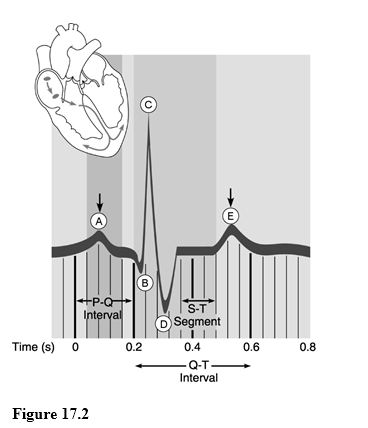Using Figure 17.2, match the following:

1) Atrial depolarization.
2) Point after which pressure begins to rise in the aorta.
3) Ventricular repolarization.
4) Point that represents the "dup" sound made by the heart.
1. A
2. D
3. E
4. E
You might also like to view...
Which of the following is associated with triaxial joints?
A. ball and socket B. 3 axes C. hip D. all of the above
Unipolar neurons have axons structurally divided into peripheral and central processes
Indicate whether the statement is true or false
Why is it possible to deliver more O2 to vigorously working cells without increasing respiration rate or cardiac output?
A. It isn't: a small decrease in PO2 has very little effect on hemoglobin unloading. B. Because once one molecule of O2 is bound to hemoglobin, the other molecules bind much more rapidly. C. Because between a PO2 of zero and a PO2 of 40, hemoglobin saturation changes very rapidly and a greater degree of unloading will occur with even small changes in PO2. D. Because CO2 released from the vigorously working cells enhances O2 binding to hemoglobin.
Explain the difference between filtration and osmosis
What will be an ideal response?